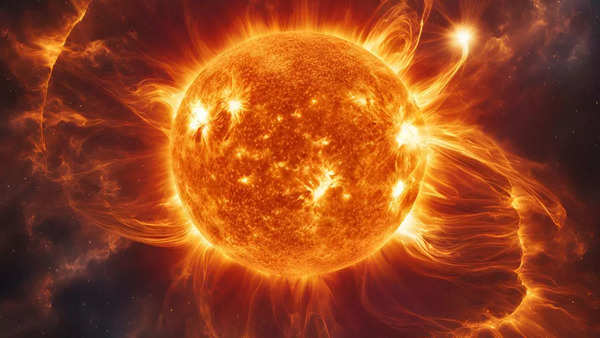Solar superflares are incredibly large energy surges from the Sun, and scientists are gradually becoming worried about them more. Previously, they only thought they happened once a thousand years or so; however, lately, it turns out that it could happen fairly often.
This matters because we use a lot of technology like satellites, GPS, and power grids. A big solar flare could mess all of that up. The big question is: Are we ready for it?
Poll
Could a Solar Superflare Disrupt Our Daily Lives?
What are Solar Superflares?

Solar flares are explosive energy bursts that the sun expels into space. Minor solar flares can easily cause slight disruptions, such as disruptions to radio signals or to the global positioning system. A solar superflare, however, is significantly more powerful; millions of times more energy will be released from a superflare compared to a regular flare. These energetic blasts travel at the speed of light, so when one happens, their effects can take mere minutes to reach Earth.
While small solar flares would cause temporary problems, a superflare could be catastrophic. It may knock out satellites, shut down power grids, and disrupt communication systems all over the world. The damage can last for days or weeks, causing significant problems with everyday life.
How often do Solar Superflares happen?

According to the reports presented by various online sources, scientists long believed that superflares of the sun occur but rarely—once every several thousand years. A recent study published in Science in December 2024 suggests otherwise, though. Led by Dr. Valeriy Vasilyev, it examined data on more than 50,000 stars like the Sun. Those stars experience a superflare about once in 100 years.
This new finding has caused alarm. If the Sun is going to be like all those other stars, then we will see more frequent solar superflares than we had ever thought. The Earth may, therefore be at risk more often than we are prepared for, as reported by online media sources.
What could happen if a Superflare hits Earth?
According to the sources, a solar superflare, when hitting Earth, may create immense disturbance. Currently, satellites play an important role in our communications, weather forecasting, navigation, and even global banking. The satellites would get destroyed or heavily damaged in case of a superflare, cutting out most of our vital services.
Power grids are also at risk. A superflare would have powerful electrical surges that damaged the power stations and the transformers, which could lead to widespread power outages lasting weeks, affecting anything from hospitals to transportation to basic utilities.

Not only that, but it will badly hurt the financial system. All three services of stock markets, banking, and online services work only when there is communication with continuous flow, most of which comes through satellites. Thus, a stop in these systems may stall the world economy, as reported by media sources.
What does history tell us?
While solar superflares are impossible to predict, history shows that similar events have occurred before. Probably the most famous solar storm in history was the Carrington Event of 1859; it caused telegraph systems to shut down across Europe and North America. While this event wasn’t as powerful as a superflare, it’s an example of how harmful solar storms can be.
According to the reports, researchers have also discovered proof of much stronger solar storms in ancient tree rings and ice cores. Among those, one event, named the Miyake Event at 775 AD, was allegedly triggered by a solar superflare. This means that such events did occur before and can happen again.
Why are we more vulnerable today?
Today, we are more exposed to solar superflares than ever. Our world depends so much on technology, especially on satellites and electricity. We use satellites for communicating with others, predicting the weather, and navigation. Our electric grids run our homes, hospitals, and businesses. A superflare can shut down these systems, bringing a great deal of chaos into our lives.
In the past, society wasn’t dependent on technology as much as it is today. We use it for nearly every part of our daily lives. If a superflare were to occur, the impact could be much greater now than it would have been in the past.
Can we prepare for a Superflare?
Even though we cannot prevent a solar superflare from occurring, researchers are trying to find a way to predict it. For instance, in 2031, the ESA plans to launch a mission known as Vigil to observe solar activity. Then if it gives us a warning a few days in advance, it would help us take necessary steps in advance before it reaches our satellites and power grids, as per the online sources.
There are also initiatives to build more resilient infrastructure. Engineers are designing power grids that can better withstand solar storms. Satellites can be built with better protection against solar radiation, and we can set up backup systems to reduce the damage.
In summary, solar superflares pose a serious risk to our technology-driven world. While we can’t stop them, efforts to predict these events and strengthen our infrastructure can help us reduce their impact. Preparing now could make the difference between temporary disruption and global chaos if a superflare hits Earth.







